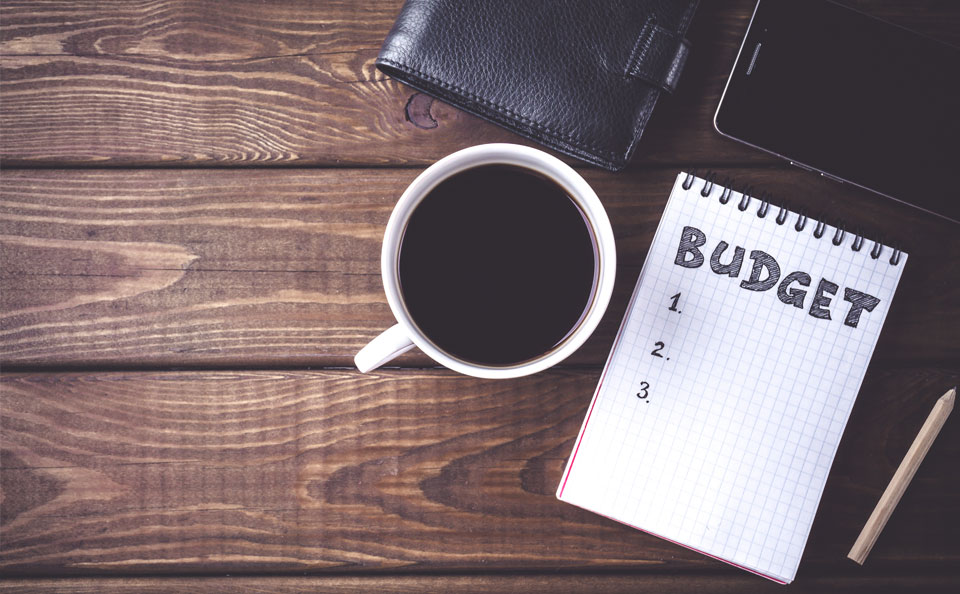
Basics of a Trade Show Exhibit Budget
When creating a trade show exhibit budget, understanding costs at a trade show is important—and is one of the first things that should be done prior to exhibiting at an event. Undoubtedly, there are many things to consider, so we’ve prepared this budget guide to help point out all the areas you need to budget for, so you can be as inclusive as possible and have fewer surprise costs at the end.
“So, how much it is going to cost?”
Most exhibitors find budgeting to be an overwhelming yet imperative step in trade show planning. It’s likely to be the first thing someone will ask before giving final approval to proceed. But before we jump into estimating costs, it’s helpful to set some goals before you start to identify what associated costs will be. Once you have a clear understanding of what you want to accomplish, you can effectively proceed with the knowledge you need to develop a trade show budget.
- What is the purpose of my display/what size exhibit space do I need? Besides identifying the type of show and its attendees, you will need to determine what your goals will be at the event and see what your exhibit space costs will be (usually about 1/3 of your total costs.)
- How much staff do you need to man the booth, and how will these individuals contribute to the success of the event?
- Will I need Internet connection or a monitor for demo station? By considering what you hope to accomplish at the booth, you can then determine what services you will need.
- Do you need meeting space at the booth? Do you need to rent casual chairs for conversation? Again, plan what you need to accomplish, and then work backwards.
- Prioritize what you want in a display. Do you want a simple display with just the basics? Or do you want to go above and beyond what your competitors are doing? Prioritize features you’d like to incorporate into your display, so it’s easier to scratch things off the list to accommodate your budget.
- A tradeshow budget includes many areas besides your booth and cost of sponsorship. There are many other line items to include such as transportation, hotel, meals, marketing collateral and show labor.
- Finally, what is your event budget? Having a figure in mind helps you to set realistic goals for what you can do and cannot do.
Let’s Ballpark It
If you need a quick budget, nothing works better than a ballpark budget. While they aren’t the Holy Grail, it gives you an estimate you can use as a guide and works great when your boss says they need it now. The formula used for ballpark budgets is a generic pricing, but we suggest you keep in mind that your costs can fluctuate depending on the city, length of show, and venue..
Your total trade show cost will be approximately 3 times the cost of your exhibit space. For example, if your exhibit space is $12,000, your budget will be approximately $36,000. And this is conservative.
If you don’t yet know what shows you will at participating in, you can use the average square foot cost method that ranges between $138.00-$154.50.
Here’s an approximate breakdown of expenses:
Space: 33%
Display booth and graphics: 18%
Travel, food, misc.: 20%
Show services (drayage, electrical etc.): 12%
Shipping: 9%
Let’s not forget the “soft” costs of exhibiting
We would be remiss if we didn’t mention something about the ‘hidden’ or ‘soft’ costs of trade show exhibiting. Below are just a few of the areas that you will should be aware of –and knowing how to save money in these areas will make that budget look even better.
- Planning the details for events is time consuming. If you have a dedicated person who is assigned to manage your events, then you may be covered. Otherwise, partnering with an exhibit company can save money, time, and costly mistakes.
- Install and Dismantle: Unexpected costs for install and dismantle are something you want to avoid. Before you commit to expensive surprises, check with your exhibit partner whose established connections can save you time and money.
- Graphics: Don’t pay more than you need to, for less than excellent quality. There is not an even playing field when it comes time to developing graphics and signage for your booth. Although many trade shows offer this service, if you want quality, consistency and good value, check with your exhibit company who can develop quality graphics at a better cost.
- Show organizers charge unexpected fees if your shipment arrives on the wrong day or time. And these fees can be steep. We’ve never met an exhibitor who likes to see these surprise charges. Consult with your exhibit company to see how much you can save by having them handle shipping your booth materials.
- By renting a booth, you don’t have to pay on going storage fees for a booth you need infrequently or just once. So, before you get started, evaluate your business needs for the next year or two and see what makes sense for your situation.
- Speaking of surprise costs, be aware that exhibit companies that manage exhibit logistics don’t all charge the same way. Be sure your exhibit team gives you a cost you can count on, with no surprise charges at the conclusion of your event. It’s just one way to stay on budget.
Here’s your FREE Budget Planning Worksheet to help plan your next event!
We hope to hear from you soon – ExhibiTeam
info@myexhibiteam.com – 858-240-7530

